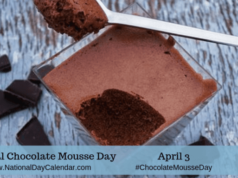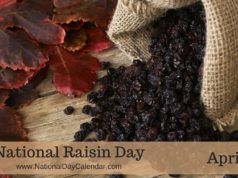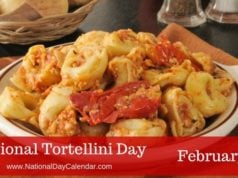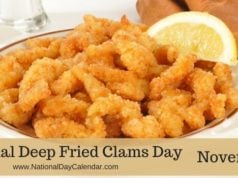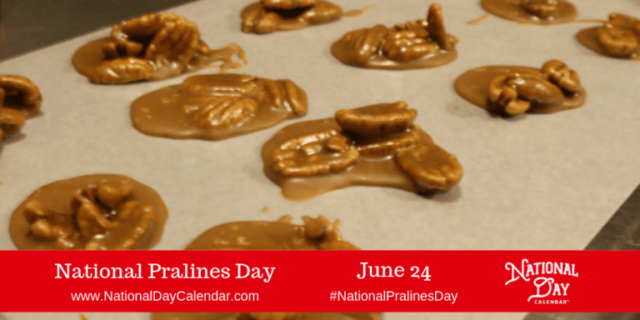
National Pralines Day is observed annually on June 24th. This day honors the praline, a confection made from nuts (whether in whole pieces or ground) and sugar syrup. Pralines may also refer to any chocolate cookie containing the ground powder of nuts.
- Belgian Pralines – contain a hard chocolate shell with a softer, sometimes liquid, filling.
- French Pralines – a combination of almonds and caramelized sugar.
- American Pralines – contain milk or cream and are softer and creamier, resembling fudge.
- At the Chateau of Vaux-le-Vicomte during the 17th century, French sugar industrialist, Marshal du Plessis-Praslin (1598-1675), originally inspired the early pralines. These first pralines were whole almonds, individually coated in caramelized sugar.
- The powder made by grinding up sugar-coated nuts is called praline. This is an ingredient in many types of cake, pastries and ice creams.
- When this powder is mixed with chocolate, it becomes praliné in French, which gave birth to what is known in French as chocolat praliné.
- The French settlers brought their recipe into Louisiana, an area of the United States where both sugar cane and pecan trees were plentiful.
- During the 19th century, New Orleans chefs substituted pecans for almonds, added cream to thicken the confection and thus created what is known throughout the Southern United States as the praline.
- The pronunciation of the candy is a bit of a point of contention as well. In New Orleans and along the Gulf Coast, where there are many communities settled by the French, the pronunciation is prah-leen, with the longaaah sound, which is closer to that of the candy’s namesake du Plessis-Praslin. Other regions of the country, including parts of Texas, Georgia, and New England have anglicized the term and pronounce it pray-leen.
- Belgian pralines, commonly known as “Belgian chocolates” or “chocolate bonbons”, are chocolate pieces filled with a soft fondant center. They were first introduced by Jean Neuhaus II, a Belgian chocolatier, in 1912.
- In Europe, the praline has evolved to an entirely different candy altogether. In Belgium and France, praline is a smooth paste of cocoa blended with finely ground nuts and used to fill chocolate bon-bons, but when it came to New Orleans it took another road.
- In 1840, Belgian chocolate maker Berwaerts sold the first pressed chocolate tablets, pastilles and figurines.
- In 1912, Jean Neuhaus Jr. invented the praline, the first chocolate with a soft filling.
- In 1915, Louise Agostini, wife of Jean Neuhaus Jr JR, developed the first ‘ballotin’, a box in which pralines were packed.
- In 1925 Charles Callebaut made one of the most important inventions: the transport of liquid chocolate.
- In 1935 Basile Kestekidès, the nephew of the founder of Leonidas, invented the ‘Manon’, a large praline coated in white chocolate.
- In 1936 Jacques launched the first filled chocolate bar with praliné.
Sources:



